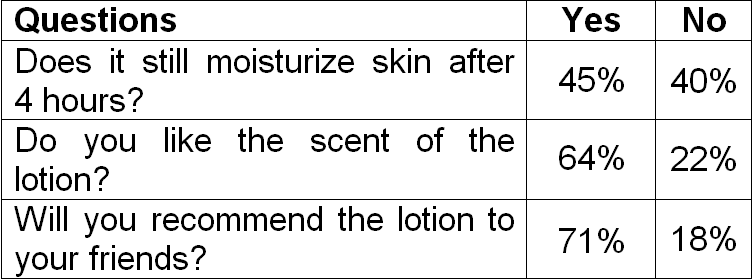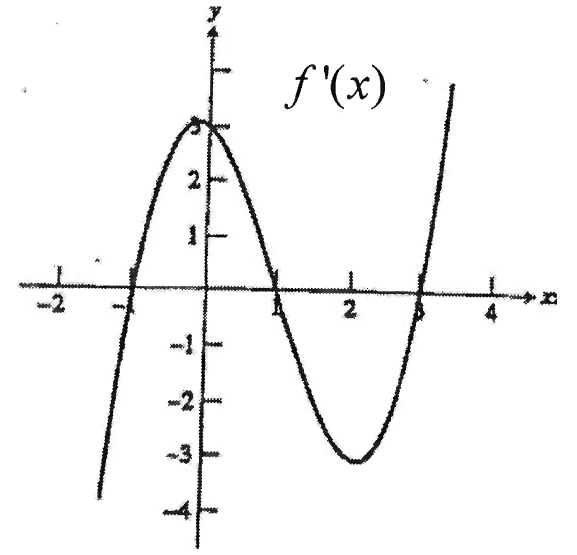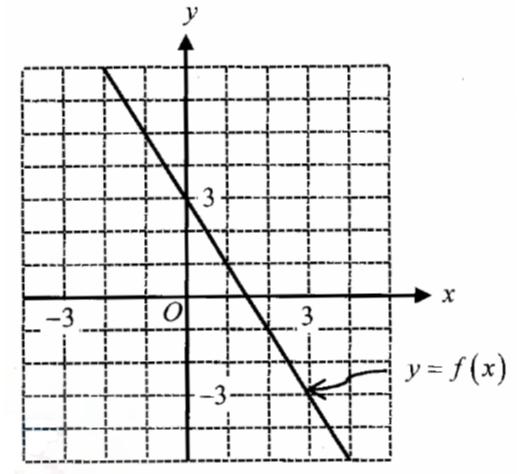HOW TO SOLVE A CUBIC EQUATION USING THE FACTOR THEOREM
Factor theorem.
- If f(a) = 0 then x - a is a factor of f(x)
- If x - a is a factor of f(x) then f(a) = 0
How to solve a cubic equation using factor theorem?
Step 1 :
If the given a cubic equation, first we use the trial and error method.
Step 2 :
By factor theorem, if f(a) = 0 then x - a is a factor of f(x).
Step 3 :
We divide the cubic equation by x - a. (Using Long Division)
Step 4 :
We have quadratic polynomial to find the other two factors.
Step 5 :
Equate each factor to zero, we get the solutions of a cubic equation.
Solve :
Problem 1 :
2x3 – x2 – x = 0
Solution :
Let f(x) = 2x3 – x2 – x
Using trial and error method.
f(1) = 2(1)3 – (1)2 – 1
= 2 – 1 – 1
= 2 - 2
f(1) = 0
Since f(1) = 0, x – 1 is a factor.
For the quadratic polynomial.
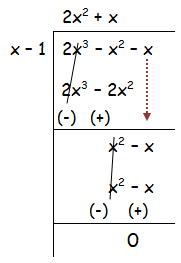
f(x) = (x – 1)(2x2 + x)
(x – 1) x(2x + 1) = 0
Equating each factors to zero.
x – 1 = 0, x = 0 and 2x + 1 = 0
x = 1, x = 0 and 2x = -1
x = -1/2
So, the solution of x is {1, 0, -1/2}.
Problem 2 :
x3 – x = 0
Solution :
Let f(x) = x3 - x
x(x2 – 1) = 0
Equating each factors to zero.
x = 0 and (x2 – 1) = 0
x2 = 1
x = ±1
So, the solution of x is {±1, 0}.
Problem 3 :
x3 + 3x2 – 4x -12 = 0
Solution :
Let f(x) = x3 + 3x2 – 4x - 12
f(1) = (1)3 + 3(1)2 – 4(1) - 12
= 1 + 3 – 4 - 12
f(1) = -12 ≠ 0
f(-1) = (-1)3 + 3(-1)2 – 4(-1) – 12
= -1 + 3 + 4 – 12
= 2 – 8
f(-1) = -6 ≠ 0
f(2) = (2)3 + 3(2)2 – 4(2) – 12
= 8 + 12 – 8 – 12
f(2) = 0
Since f(2) = 0, x – 2 is a factor.
For the quadratic factor.
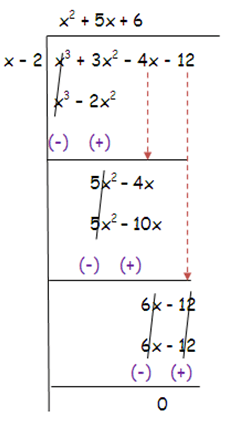
f(x) = (x – 2)(x2 + 5x + 6)
By factoring quadratic polynomial, we get
(x – 2) (x2 + 3x + 2x + 6) = 0
By grouping,
(x – 2) (x2 + 3x) + (2x + 6) = 0
(x – 2) x(x + 3) + 2(x + 3) = 0
(x – 2)(x + 3)(x + 2) = 0
Equating each factors to zero.
x – 2 = 0, x + 3 = 0 and x + 2 = 0
x = 2, x = -3 and x = -2
So, the solution of x is {±2, -3}.
Problem 4 :
x3 – 3x – 2 = 0
Solution :
Let f(x) = x3 + 0x2 – 3x – 2
f(1) = (1)3 + 0(1)2 – 3(1) - 2
= 1 – 3 – 2
= -2 - 2
f(1) = -4 ≠ 0
f(-1) = (-1)3 + 0(-1)2 – 3(-1) - 2
= -1 + 3 – 2
= 2 - 2
f(-1) = 0
Since f(-1) = 0, x + 1 is a factor.
For the quadratic factor.
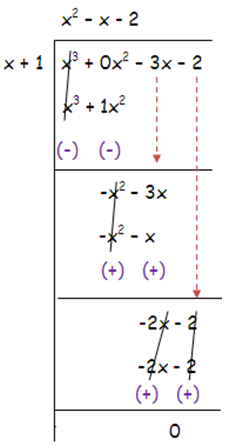
f(x) = (x + 1) (x2 – x – 2)
By factoring quadratic polynomial, we get
(x + 1) (x2 + x – 2x – 2) = 0
By grouping,
(x + 1) (x2 + x) + (-2x – 2) = 0
(x + 1) x(x + 1) + (-2)(x + 1) = 0
(x + 1)(x + 1)(x - 2) = 0
Equating each factors to zero.
x + 1 = 0 and x – 2 =0
x = -1 and x = 2
So, the solution of x is {-1, 2}.
Problem 5 :
2x3 + 5x2 – 14x – 8 = 0
Solution :
Let f(x) = 2x3 + 5x2 – 14x – 8
Here,
f(1) = -15 ≠ 0
f(-1) = 9 ≠ 0
f(2) = 0
Since f(2) = 0, x - 2 is a factor.
For the quadratic factor.
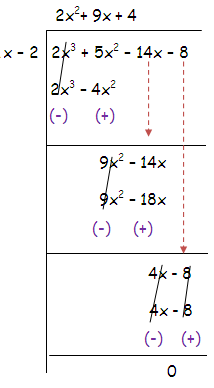
f(x) = (x – 2) (2x2 + 9x + 4)
By factoring quadratic polynomial, we get
(x – 2) (2x2 + x + 8x + 4) = 0
By grouping,
(x – 2) (2x2 + x) + (8x + 4) = 0
(x – 2) x(2x + 1) + 4(2x + 1) = 0
(x – 2)(x + 4)(2x + 1) = 0
x – 2 = 0, 2x + 1 = 0 and x + 4 = 0
x = 2, x = -1/2 and x = -4
So, the solution of x is {2, -1/2, -4}.
Problem 6 :
x3 + 7x2 – 36 = 0
Solution :
Let f(x) = x3 + 7x2 + 0x – 36
Here,
f(1) = -28 ≠ 0
f(-1) = -30 ≠ 0
f(2) = 0
Since f(2) = 0, x – 2 is a factor.
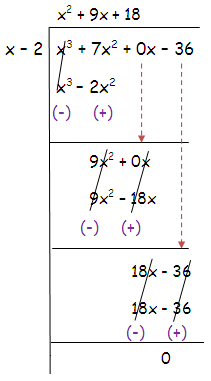
f(x) = (x – 2) (x2 + 9x + 18)
(x – 2) (x2 + 6x + 3x+ 18) = 0
By grouping,
(x – 2) (x2 + 6x) + (3x + 18) = 0
(x – 2) x(x + 6) + 3(x + 6) = 0
(x – 2)(x + 3)(x + 6) = 0
x – 2 = 0, x + 3 = 0 and x + 6 = 0
x = 2, x = -3 and x = -6
So, the solution of x is {2, -3, -6}.
Problem 7 :
4x3 + 12x2 + 9x + 2 = 0
Solution :
Let f(x) = 4x3 + 12x2 + 9x + 2
Here,
f(1) = 27 ≠ 0
f(-1) = 1 ≠ 0
f(2) = 100 ≠ 0
f(-2) = 0
Since f(-2) = 0, x + 2 is a factor.
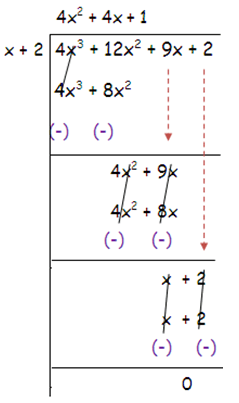
f(x) = (x + 2) (4x2 + 4x + 1)
(x + 2) (4x2 + 2x + 2x + 1) = 0
By grouping,
(x + 2) (4x2 + 2x) + (2x + 1) = 0
(x + 2) 2x(2x + 1) + 1(2x + 1) = 0
(x + 2)(2x + 1) = 0
x + 2 = 0 and 2x + 1 = 0
x = -2 and x = -1/2
So, the solution of x is {-2, -1/2}.
Problem 8 :
x3 – 2x2 – 4x + 3 = 0
Solution :
Let f(x) = x3 – 2x2 – 4x + 3
Here,
|
f(1) = -2 ≠ 0 f(-1) = 4 ≠ 0 f(2) = -5 ≠ 0 |
f(-2) = -5 ≠ 0 f(3) = 0 |
Since f(3) = 0, x – 3 is a factor.
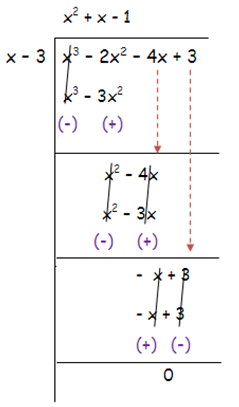
f(x) = (x – 3)(x2 + x – 1)
(x – 3)(x2 + x – 1) = 0
Since x2 + x – 1 is not factorable, we use the quadratic formula.
x = -b ± √(b2 – 4ac)/2a
Here a = 1, b = 1, and c = -1
= -1 ± √((-1)2 – 4(-1)(1))/2(1)
= -1 ± √(1 + 4)/2
x = (-1 ± √5)/2
x = 3 and x = (-1 ± √5)/2
So, the solution of x is {3, (-1 ± √5)/2}.

Apart from the stuff given above, if you need any other stuff in math, please use our google custom search here.
Kindly mail your feedback to v4formath@gmail.com
We always appreciate your feedback.
©All rights reserved. onlinemath4all.com
Recent Articles
-
Digital SAT Math Problems and Solutions (Part - 101)
Jan 26, 25 07:59 PM
Digital SAT Math Problems and Solutions (Part - 101) -
AP Calculus AB Problems with Solutions (Part - 7)
Jan 26, 25 06:56 AM
AP Calculus AB Problems with Solutions (Part - 7) -
Digital SAT Math Problems and Solutions (Part - 103)
Jan 25, 25 01:00 AM
Digital SAT Math Problems and Solutions (Part - 103)
